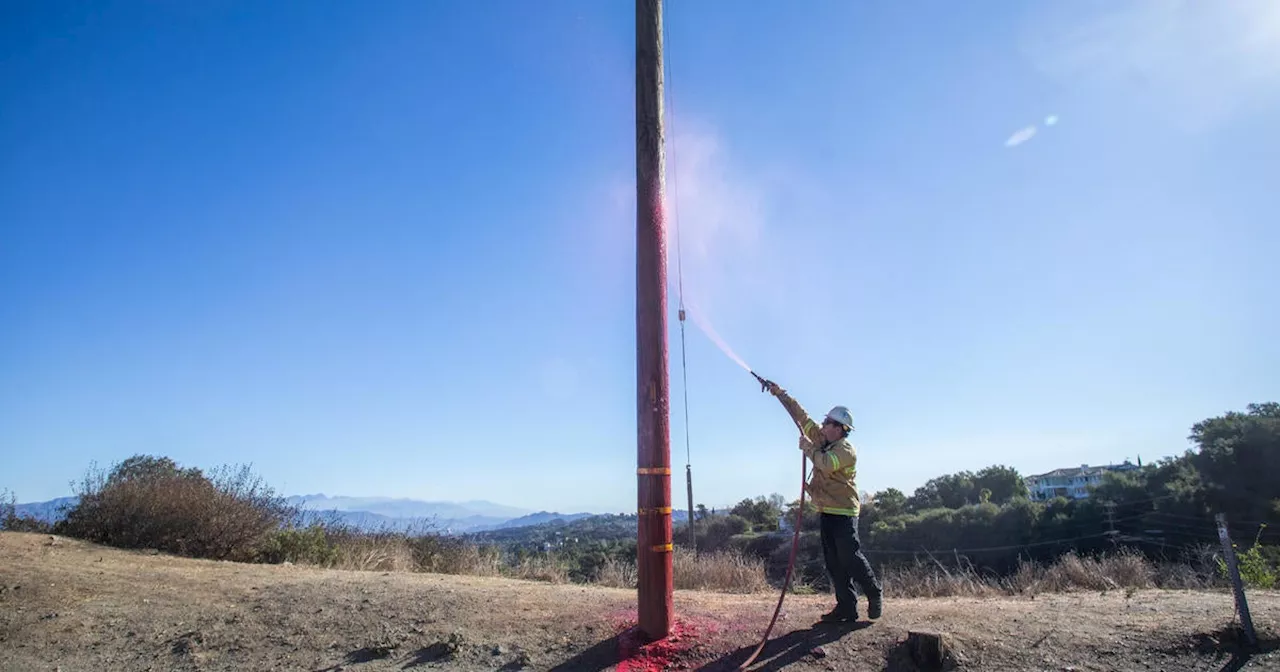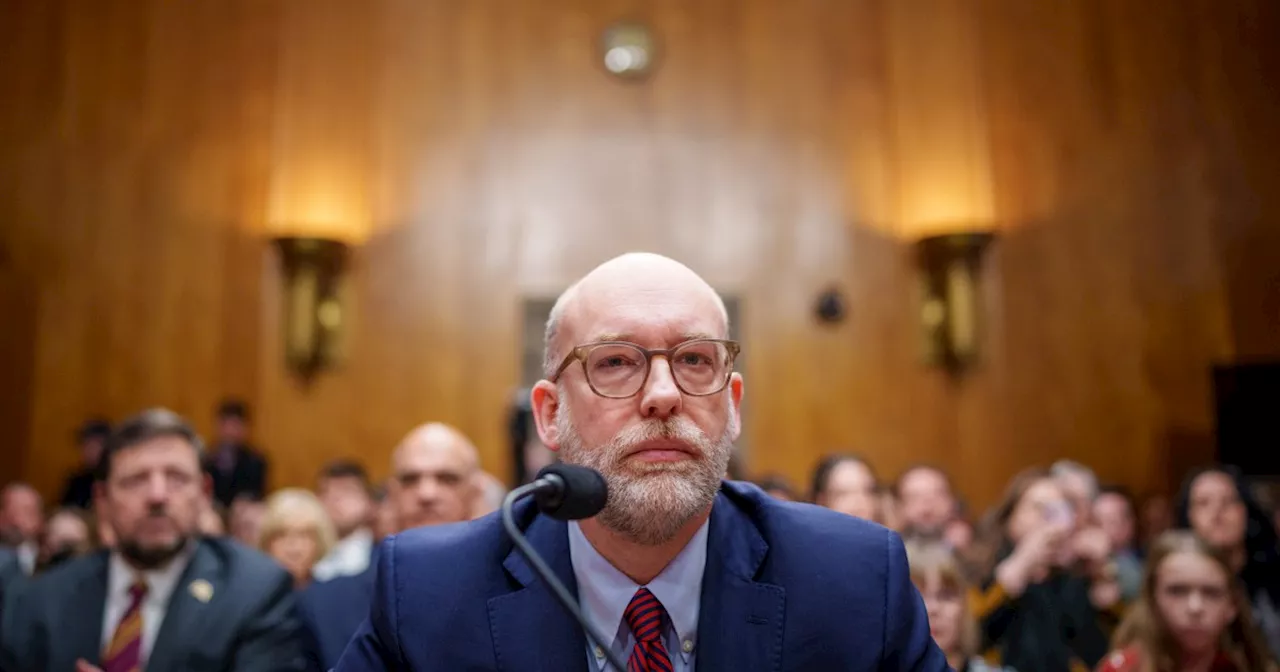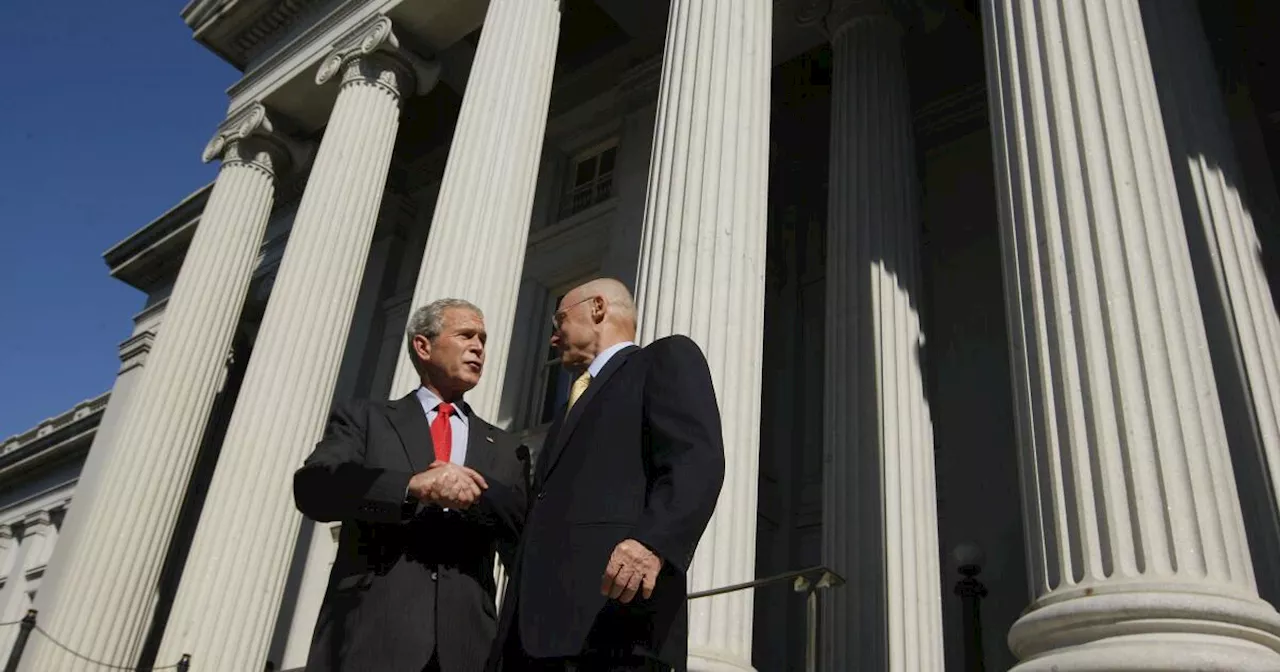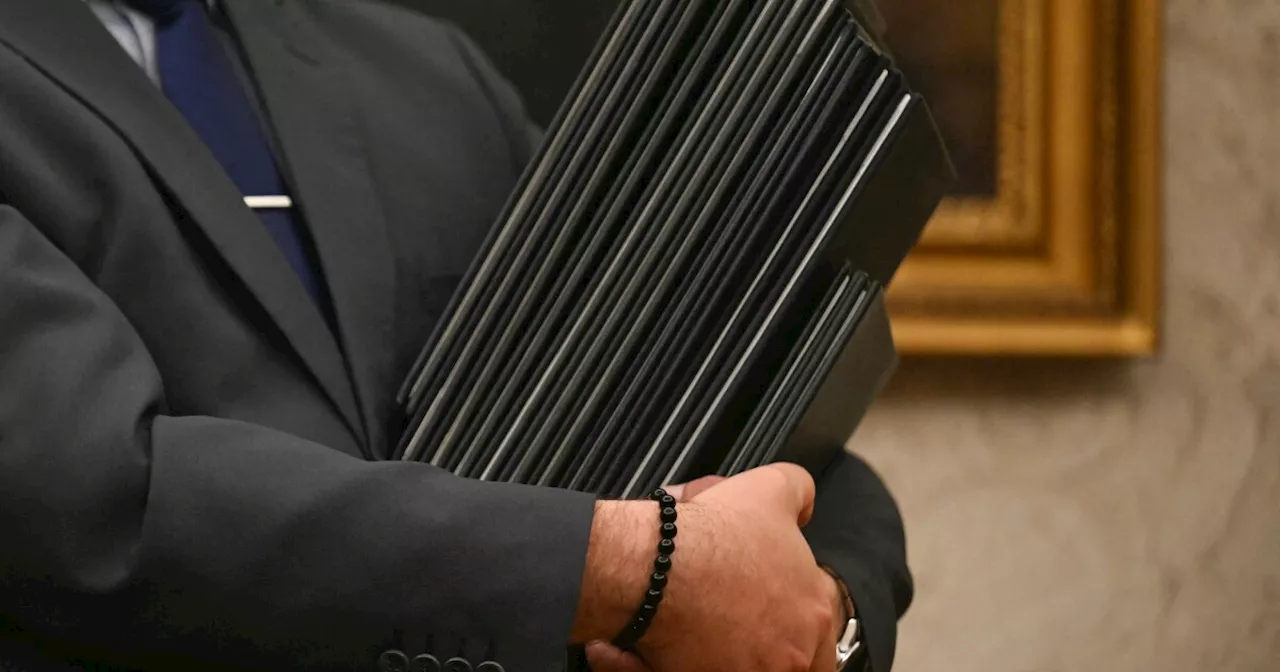This article explores the history, legality, and increasing use of executive orders by U.S. presidents. It examines notable examples, the debate surrounding their scope, and the balance of power between the executive and legislative branches.
The use of executive orders by presidents has been a subject of debate throughout American history. While presidents possess the authority to issue these directives, their scope and impact are often scrutinized. An aide holds executive orders to be signed by President Trump at the White House on Monday. The legality and effectiveness of executive orders have been tested in court numerous times.
For instance, President Harry Truman's 1952 executive order seizing steel mills to ensure production during the Korean War was deemed overreaching by the Supreme Court. In 1992, Congress nullified President George H.W. Bush's executive order establishing a human fetal tissue bank for scientific research by passing legislation that effectively blocked its implementation. The American Bar Association (ABA) clarifies that Congress can hinder the execution of an executive order through legislation, such as by withholding funding. Additionally, only a sitting U.S. President can overturn an existing executive order by issuing a new one.Presidents can employ various types of executive actions to influence government policy without seeking congressional approval. These actions include executive orders, memoranda, and proclamations. Executive orders, memoranda, and proclamations are distinct tools presidents use to shape government policy. Executive orders, if grounded in the president's constitutional or statutory authority, carry the force of law and must be published in the Federal Register to inform the public. In contrast, memoranda, similar to executive orders but not requiring legal justification or Federal Register publication, are used for internal administrative matters and are harder to track. Presidential proclamations, on the other hand, typically relate to private citizens' activities and rarely possess legal enforceability. They are commonly used to announce holidays, commemorations, and federal observances. The historical use of executive orders has seen a surge in recent decades. While early presidents issued relatively few orders, the number has steadily increased over time. Theodore Roosevelt, for example, became the first president to surpass 1,000 executive orders, averaging 145 per year. Franklin Roosevelt's tenure witnessed a record 3,721 executive orders. Presidents since then have issued hundreds of executive orders each. Biden issued 162 orders during his first term, while Trump issued 220 during his first term. Some legal scholars argue that the increasing reliance on executive orders raises concerns about presidential overreach and the erosion of congressional authority. Others contend that the number of orders alone does not determine their legality or the president's adherence to his constitutional limits. What truly matters, they argue, is the content and implications of the orders themselves.
Executive Orders Presidential Power United States Government Congress History Of Presidency Legal Precedents
United States Latest News, United States Headlines
Similar News:You can also read news stories similar to this one that we have collected from other news sources.
 Power companies douse Los Angeles power poles with retardant to protect power grid during firesWith multiple wildfires still burning across the county, several Los Angeles power companies have started to try and get ahead of the potentially volatile and erratic flames, working to mitigate additional risks by clearing dry vegetation and protecting valuable power lines.
Power companies douse Los Angeles power poles with retardant to protect power grid during firesWith multiple wildfires still burning across the county, several Los Angeles power companies have started to try and get ahead of the potentially volatile and erratic flames, working to mitigate additional risks by clearing dry vegetation and protecting valuable power lines.
Read more »
 Vought Confirmation Hearing: A Warning Sign of Unchecked Executive PowerRussell Vought's confirmation hearing for OMB director raises alarm bells about the potential for an unfettered executive branch. His evasive answers, expressed desire to disregard the Impoundment Control Act, and views on the role of the presidency signal a concerning shift towards centralized power.
Vought Confirmation Hearing: A Warning Sign of Unchecked Executive PowerRussell Vought's confirmation hearing for OMB director raises alarm bells about the potential for an unfettered executive branch. His evasive answers, expressed desire to disregard the Impoundment Control Act, and views on the role of the presidency signal a concerning shift towards centralized power.
Read more »
 Trump's Power Play: Legal Limits on Executive ActionThe article explores the challenges President-elect Donald Trump will face in implementing his ambitious agenda, highlighting the importance of legal authority and process. Drawing parallels to the 2008 financial crisis, the author argues that even with a perceived mandate, Trump's executive actions will be constrained by the need for justification and due process. The article uses the proposed Department of Government Efficiency (DOGE) as an example, questioning the extent to which entrepreneurs can operate effectively within the confines of government bureaucracy.
Trump's Power Play: Legal Limits on Executive ActionThe article explores the challenges President-elect Donald Trump will face in implementing his ambitious agenda, highlighting the importance of legal authority and process. Drawing parallels to the 2008 financial crisis, the author argues that even with a perceived mandate, Trump's executive actions will be constrained by the need for justification and due process. The article uses the proposed Department of Government Efficiency (DOGE) as an example, questioning the extent to which entrepreneurs can operate effectively within the confines of government bureaucracy.
Read more »
 Trump’s comeback will begin with a blast of executive powerDonald Trump will flex one of the most intense and sweeping demonstrations of presidential power on the first day of any administration, seeking to fundamentally change America’s course by sundown on Monday.
Trump’s comeback will begin with a blast of executive powerDonald Trump will flex one of the most intense and sweeping demonstrations of presidential power on the first day of any administration, seeking to fundamentally change America’s course by sundown on Monday.
Read more »
 Trump's Return to Power: Executive Orders Take Center StageAs Donald Trump prepares to return to the White House, he plans to leverage executive orders to swiftly reshape government policies. Executive orders grant presidents the authority to implement decisions without congressional approval, allowing them to bypass legislative roadblocks. While often used for routine administrative tasks, they can also be employed to advance major policy agendas. Trump's reliance on executive orders raises questions about their potential to circumvent democratic processes and the checks and balances inherent in the US system.
Trump's Return to Power: Executive Orders Take Center StageAs Donald Trump prepares to return to the White House, he plans to leverage executive orders to swiftly reshape government policies. Executive orders grant presidents the authority to implement decisions without congressional approval, allowing them to bypass legislative roadblocks. While often used for routine administrative tasks, they can also be employed to advance major policy agendas. Trump's reliance on executive orders raises questions about their potential to circumvent democratic processes and the checks and balances inherent in the US system.
Read more »
 Trump Returns to Power With Plans for Executive Order OverhaulPresident Donald Trump is returning to the White House prepared to immediately reshape the government through executive orders. This article explores the power and limitations of executive orders, their historical usage, and potential implications for Trump's second term.
Trump Returns to Power With Plans for Executive Order OverhaulPresident Donald Trump is returning to the White House prepared to immediately reshape the government through executive orders. This article explores the power and limitations of executive orders, their historical usage, and potential implications for Trump's second term.
Read more »
